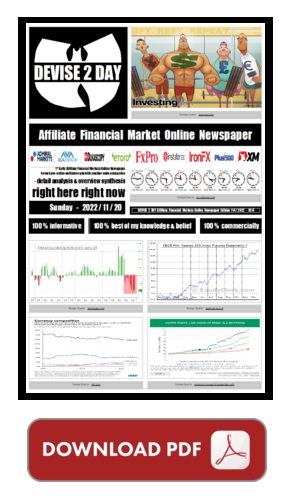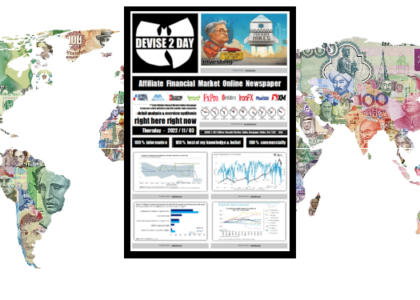
2022/11/20 (114) Technical Analysis – XETR-BAS & GBPUSD
UK Inflation At It`s Peak While US Inflation Slowed!
This Is What We Excepted For Our Long GBPUSD 4XSetUp…
A Strong GBPUSD Cross Pair Is On The Other Hand More Or Less Always A Weak DXY
– That`s Why We Shouldn`t Ignore Some Key Technical Price Action Zones Across The DXY
99.910 points on 2022/02/20 was the intraday high before the corona virus outbreak crash – and that before as the stock market crashed.
94.650 points on 2002/03/09 was the intraday low crash while the corona virus outbreak – and that as the stock market started to crashed.
102.992 points on 2022/03/20 was the intraday high while the corona virus outbreak crash – and that more or less around stock market lows.
These price action zone is important – yes even essential. Because, if the DXY falls back into this price action zone (betwenn 102.992 and/or 94.6450 points) we can technicly argue that if the DXY is trading within this zone, the long-term uptrend has been briefly broken. And then we have to ask ourselves the question in the medium term? What’s next?
99.667 points on 2018/10/01 was the yearly high 2019
97.693 points on 2018/11/12 was the yearly high 2018
103.820 points on 2017/01/03 was the yearly high 2017
103.650 points on 2016/12/16 was the yearly high 2016
100.510 points on 2015/12/02 was the yearly high 2015
However Let`s Focus Back On The Last Price Action Of The 10Y Yields And/Or Stock Markets On Both Sides
The blue-chip Dow Jones and the S&P 500 lost some upside momentum seen at the open on Friday but closed up roughly 0.6% each, as most of the optimism about upbeat earnings was offset by persistent concerns about a Fed-induced downturn. The tech-heavy Nasdaq underperformed, however, closing near the flatline, as rising Treasury yields dragged high-growth and other tech stocks. Hawkish speeches from several Federal Reserve policymakers dashed hopes of apause in the central bank’s tightening cycle. Among them, St. Louis Fed President James Bullard was the most drastic, warning that tightening conditions have only had a modest effect on inflation. On the corporate side, Applied Materials rose almost 2% after the chip tools maker forecasted first-quarter revenue above analysts’ expectations. The Dow is virtually flat for the week, while the S&P 500 lost 0.7% and Nasdaq 1.2%. London equities snapped three days of losses on Friday, with benchmark FTSE 100 adding roughly 0.5% to close around the 7,400 mark, driven by gains among real estate, consumer discretionary, and utility stocks, while rising almost 1% for the week. The latest data showed retail sales rose twice as much as expected in October, although it continued to show a downward trend. Investors also continued to digest the Autumn Statement unveiled on Thursday. Finance Minister Jeremy Hunt proposed around £30 billion in spending cuts and £25 billion in tax increases, including a six-year freeze on income tax thresholds and lowering the top income tax rate to £125,000. At the same time, it forecasted that the UK economy would shrink by 1.4% this year and would not recover to pre-pandemic levels until the end of 2024.
The yield on the UK’s 10-year Gilt rose towards 3.3%, moving away from a two-month low of 3.09% hit on Thursday, after UK Chancellor Jeremy Hunt announced tax rises and spending cuts in an effort to fix the country’s public finances and restore its economic credibility. The tax changes were broadly expected by markets, with main measures including cutting the threshold for the top rate of income tax of 45% to £125,000 and freezing allowances and thresholds for income tax, national insurance, and inheritance tax for a further two years. Also, the budget aims to slash the dividend allowance to £1,000 next year, and then to £500 in April 2024. Meanwhile, the Office for Budget Responsibility has judged that the UK is now in recession, predicting the country’s GDP will contract by 1.4% next year, before returning to growth in 2024. Elsewhere, the Bank of England is likely to continue hiking rates despite a slowdown in the economy, but their peak will likely be lower than in the US. The yield on the US 10-year Treasury note moved towards 3.8%, bouncing sharply from an over one-month low of 3.7% hit in the prior session as uncertainty regarding the Fed’s rate path spooked bond investors. St. Louis Fed President James Bullard and San Francisco Fed President Mary Daly were among the latest policymakers to throw some cold water in expectations of a sooner-than-expected pause in the central bank tightening cycle. Mixed signs from the US economy, with retail sales data signaling incredible resilience from US consumers despite macro headwinds, added to uncertainty about the Fed’s next move.Dollar Supported By Hawkish Fed View
The dollar index stabilized around 106.5 on Friday, supported this week by strong US retail sales data and hawkish remarks from Federal Reserve officials who pushed back against expectations of a policy shift. Most notably, St. Louis Fed President James Bullard said that the policy rate is not sufficiently restrictive and suggested that it could reach the 5% to 7% range as authorities try to stamp out inflation, higher than what the market is currently pricing. Markets are betting that the Fed would deliver a more moderate 50 basis point rate hike in December, and a series of 25 basis point increases next year. Still, the dollar index remains close to three-month lows after facing heavy selling pressure recently due to softening US inflation data, while traders look ahead to November and December inflation readings for confirmation of a trend.
Sterling Hovers Near 3-Month High
The British pound bounced back to $1.19 on Friday, recovering from a 0.5% loss on Thursday and closing in on the highest in 3 months as investors welcomed fresh data and a new budget. Data released on Friday showed retail sales rose 0.6% in October, well above market expectations of a 0.3% gain. Meanwhile, UK Chancellor Jeremy Hunt outlined in the Autumn Budget Statement a £55 billion package of tax rises and spending cuts aiming to fix the country’s public finances and restore its economic credibility. Still, the chancellor said the UK is already in recession and the OBR forecasted the British economy to shrink by 1.4% in 2023, compared with a forecast for growth of 1.8% in the previous outlook published in March. On the monetary policy front, UK money market futures pointed to the Bank of England raising interest rates to a peak of 4.53% by August next year, from 4.59% immediately prior to Hunt’s remarks.
good morning, good day, and/or good night
at whatever time, wherever you are !
right here right now :


















